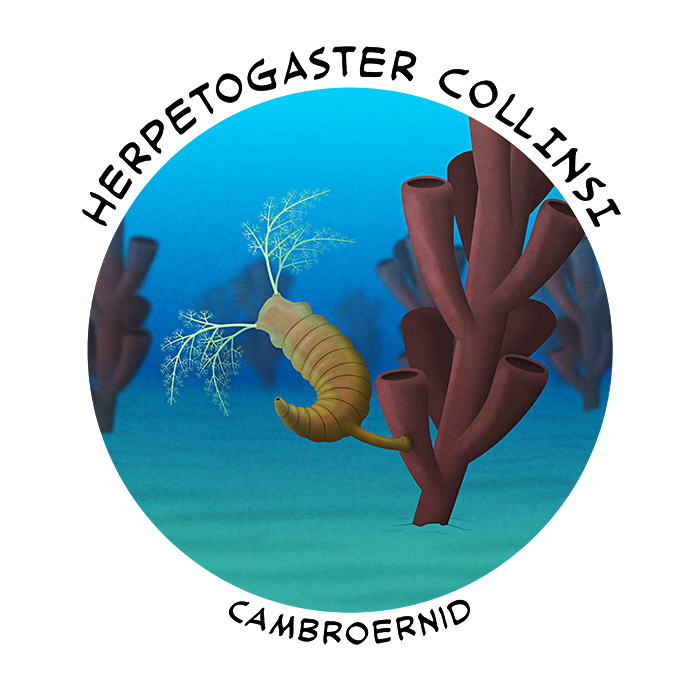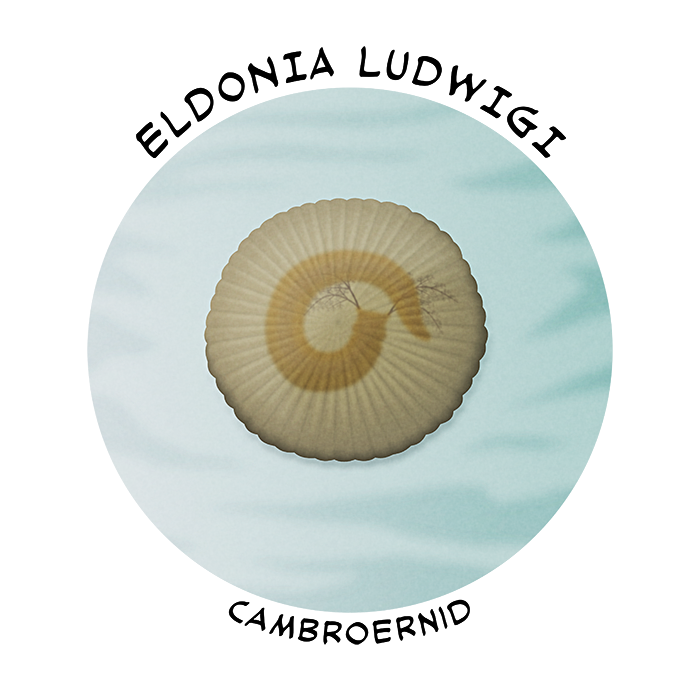Modern hemichordates and echinoderms are the closest living relatives of each other, part of a larger lineage of deuterostome animals known as ambulacrarians – but they also seem to have had some other strange cousins during the Cambrian.
Cambroernids were a bizarre group with branching feeding tentacles and a gut enclosed in a coiled sac. They came in a range of forms from worm-like to cup-like to disc-shaped, and despite their fossils being known since the early 1900s their evolutionary affinities were a longstanding problem. Various species had been interpreted in the past as sea cucumbers, jellyfish, tunicates, gnathiferans, or lophophorates, but in recent years they’ve been recognized as all being related, and linked to the ambulacrarians.
And it’s still not entirely clear where in that group they actually belong. They were probably a weird early stem lineage, but they might also be early stem-hemichordates or stem-echinoderms.

Herpetogaster collinsi was one of the main links in figuring out the relationships of the cambroernids. Known from both Nevada, USA, and Canada, this worm-like animal lived around 516-508 million years ago, with a closely related species Herpetogaster haiyanensis also known from southwest China (~518 million years ago).
It was about 4cm long (1.6″) and had a slightly helical clockwise-curling body with about 13 segments, and long paired tentacles on its head that branched in a fractal-like pattern. A flexible extendible stalk-like structure with an attachment disc grew from the middle of its body, sometimes attached to the sponge Vauxia, and multiple individuals have been found clustered together on the same fossil slabs suggesting they often lived in groups.
Its actual ecology isn’t really known. It was probably a suspension feeder, extending its tentacles to catch plankton and organic particles in the water, but some specimens have been found in association with small hyolith shells, and in the Chinese species some of those shells are preserved inside its mouth and gut cavity – suggesting a possible predatory mode of life instead.

Eldonia ludwigi is known from hundreds of specimens from the Canadian Burgess Shale (~508 million years ago), with a slightly older Cambrian species Eldonia eumorpha also known from China (~518 million years ago).
It was originally mistaken for a sea cucumber when it was first discovered in the early 1900s, then a few decades later it was reclassified as a jellyfish based on its round disc-like shape, and then later again it was linked with brachiopods and bryozoans due to its cluster of tentacles being interpreted as a lophophore.
But with the discovery of Herpetogaster its true cambroernid affinities became more obvious. Eldonia had the same clockwise-coiled gut and branching feeding tentacles, but lacked the attachment stalk and instead had a more flattened form with its sac-like body expanded and fused into a tough but flexible wide disc.
It grew up to about 10cm in diameter (4″) and seems to have been similarly gregarious to Herpetogaster, often found in groups of multiple individuals. Sometimes lobopodian worms are also found in close association with Eldonia, possibly predating or scavenging on them.
But much like its relative its overall ecology is still uncertain. Back when it was thought to be a jellyfish it was assumed to be a free-swimming animal (with the lobopodians riding around on it!), but it was later recognized as a mostly-stationary creature that lived laying on the seafloor. Even then, though, it was unclear which way up it rested – the lophophore interpretation assumed it had the tentacles waving up above itself, suspension feeding, but the fossils are almost always preserved the other way around with the tentacles facing downwards below the disc.
Possibly it could extend its tentacles out beyond the disc and sweep them across the seafloor, feeding on whatever organic detritus or small prey it encountered.
Whatever the cambroernids were doing, they must have been fairly good at it because the Eldonia-like forms survived for around 140 million years. Impressions of their disc-shaped bodies are found in various locations around the world throughout the early Paleozoic, and the last known fossils come from the mid-Devonian about 380 million years ago.
